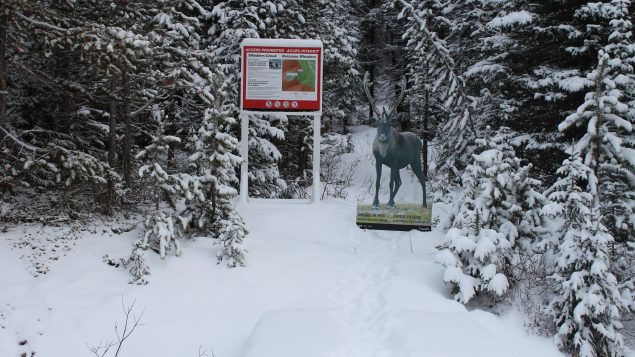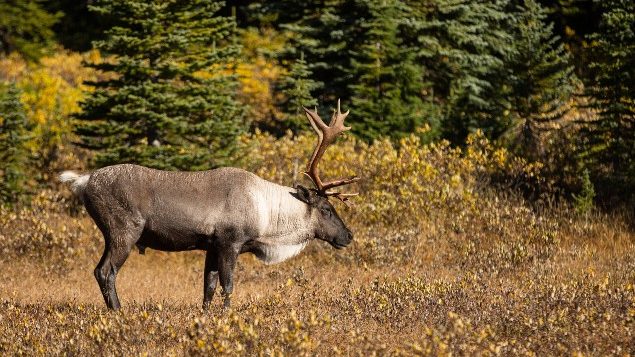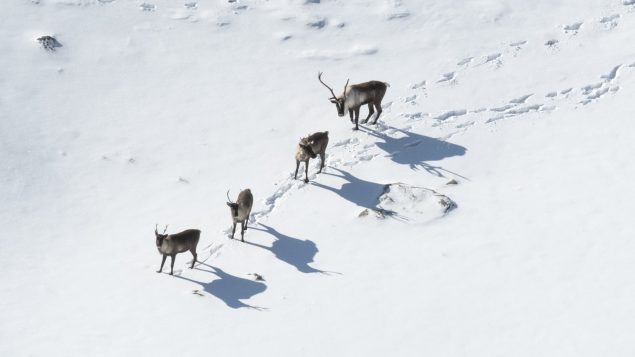The number of mountain caribou in western Canada’s Jasper-Banff region has dropped so precipitously that the herds are considered functionally extirpated, says Dave Argument, a conservation manager for Parks Canada. That means there are ten or fewer breeding animals and recovery for the herd on its own is not possible.
There are only 55 caribou left from what used to be four distinct herds in this area. One herd in Banff was wiped out by an avalanche in 2009. There is no evidence that the Maligne herd remains and that leaves only two herds: the Tonquin and the Brazeau herd. The caribou have been decimated by wolves and human disruption of their habitat.
Before 1959 wolves were culled in the area to reduce their killing elk. But that year, the program was reconsidered and the wolf cull was stopped. These predators bounced back and their increasing numbers took a toll on the caribou.
In the past, people travelling through woods in park areas have tamped down snow making it easier for wolves to access caribou areas. Now these area are closed off in in winter months.

People are warned to not travel into the woods because that would tamp down the snow making it easier for wolves to hunt caribou. (Layla Neufeld/Parks Canada)
Fewer wolves mean less danger for caribou
The wolf population has decreased to a level less dangerous for the caribou and limits have been placed on access through their habitat. But Argument says that will not be enough. “The herd is in danger of winking out,” he said in a telephone interview.
For about five years, his team has been considering a captive breeding program to help replenish the Jasper-Banff caribou herd. They have drawn up a draft plan that would involve bringing in up to 40 female caribou from other, genetically similar herds to a special facility that would be built near the town of Jasper. The females would give birth to up to 20 animals a year. The young to be kept for one or two years at which point they could be released into the wild.
While in captivity, the caribou would be fed pellets but would be given their natural food of lichen just before release so the young could get used to it.
Plan to be assessed by outside experts
The plan was devised with some input from Indigenous people. It will be submitted to a panel of academics who specialize in caribou conservation and breeding to see if it is workable.
If the plan goes forward, Argument hopes it could start producing young caribou as early as 2024.
Many of the caribou herds across Canada’s boreal region are declining because of resource development and disruption of their habitats.

The Jasper-Banff caribou herd is down to 55 members. (Ryan Bray/Parks Canada)







For reasons beyond our control, and for an undetermined period of time, our comment section is now closed. However, our social networks remain open to your contributions.